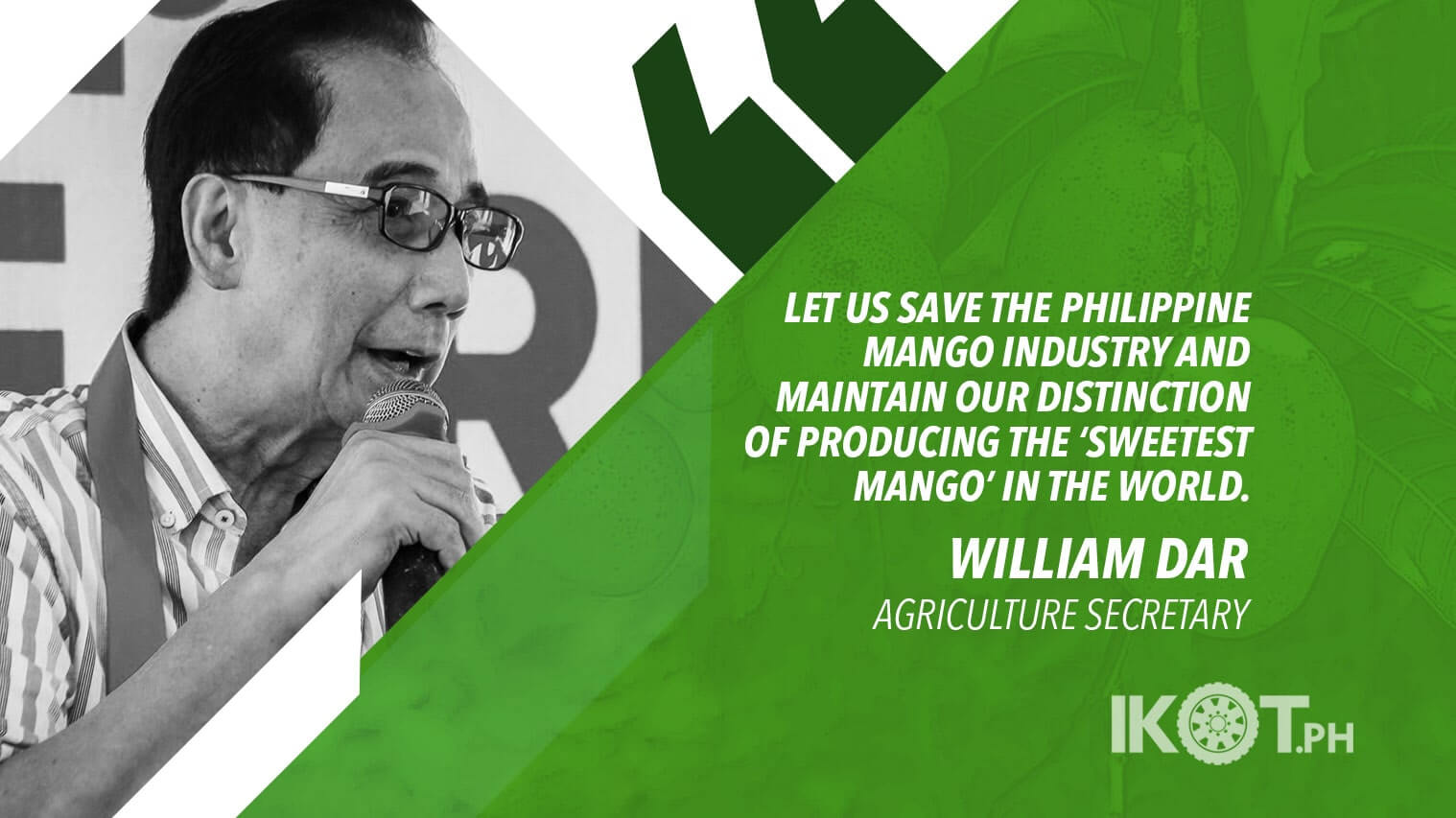The Department of Agriculture (DA) is bent on helping mango farmers beat the kurikong (cecid fly) infestation and enable them to increase the yield of quality fruits for the domestic and export markets.
“Together, let us harness the power of science and technology to pro-actively get rid of kurikong and other major concerns confronting our mango industry,” said Secretary William Dar during the First Luzon Mango Congress, held recently at the DA’s Bureau of Soils and Water Management, in Quezon City.
Dar urged the country’s mango industry stakeholders and concerned DA agencies to enhance the protocol on the Good Agricultural Practices (GAP) on mango production, making use of the latest agronomy and integrated pest management practices.
“Many growers have shifted to other crops because of the damage caused by the cecid fly.”
For his part, Ricardo Tolentino, president of the United Luzon Mango Stakeholders Association (ULMSA), lamented that many growers have shifted to other crops because of the damage caused by the cecid fly.
The cecid fly is a mosquito-like insect that lays its eggs on the mango fruit’s skin and young mango leaves. Its larva bores into the fruit and feeds on it, causing holes on the fruit that resemble kurikong or scabby lesions.
Tolentino asked his colleagues — composed of mango growers, processors, traders, and other industry players — to unite with concerned DA agencies in the fight the cecid fly infestation and save the country’s mango industry.
The agriculture chief challenged them to lead the way in the sustainable production of quality mangoes for both domestic and export markets, in partnership with the DA.
Dar directed DA Undersecretary for High-Value Crops and Rural Credit Evelyn Laviña to work with the Bureau of Agricultural Research (BAR) in applying the results of research and development initiatives to immediately address the cecid fly infestation.
“Finalize the ideas immediately and start the projects in two weeks,” he told Laviña.
“Conduct a massive education and training campaign that will highlight mango production protocols.”
Dar also instructed the Agricultural Training Institute (ATI) to conduct a massive education and training campaign that will highlight mango production protocols, including mainstreaming the inclusive agribusiness approach for mango growers.
“Together, let us save the Philippine mango industry, and maintain our distinction of producing the ‘sweetest mango’ in the world,” he stressed.
Exports of fresh and dried mangoes amounted to $17.88 million, from January to November 2019, four percent more than in 2018, according to the Philippine Statistics Authority (PSA).
Last year, the country produced 737,938 metric tons (MT) of mangoes, worth P24 billion, of which Luzon shared 334,581 MT, representing 45 percent. The total area planted to mango in 2018 was placed at 185,900 hectares nationwide, the PSA said.

